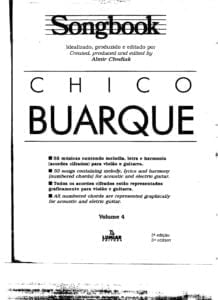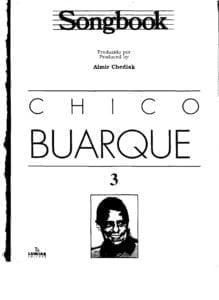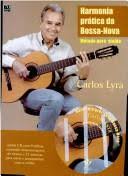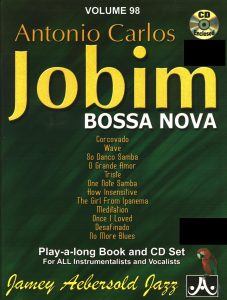Table of Contents
Come join us now, and enjoy playing your beloved music and browse through great scores of every level and styles!
Can’t find the songbook you’re looking for? Please, email us at: sheetmusiclibrarypdf@gmail.com We’d like to help you!

Best Sheet Music download from our Library.
Happy birthday, Chico Buarque, born on this day in 1944
Chico Buarque: The Architect of Brazilian Song, Where Poetry Meets Politics and Harmony
Chico Buarque de Hollanda stands not merely as a musician, but as a cornerstone of modern Brazilian culture. His career, spanning over six decades, is a masterful blend of profound lyricism, intricate musicality, unwavering social commitment, and literary genius. He is the “canção-arte” (art-song) personified, crafting songs that are as musically sophisticated as they are poetically dense and politically resonant. To explore Chico Buarque is to journey through the heart of Brazil’s soul, its struggles, its joys, its complexities, and its enduring beauty.

Descarga las mejores partituras de nuestra biblioteca.
Browse in the Library:
Or browse in the categories menus & download the Library Catalog PDF:
I. Biography: The Making of a Cultural Titan
Born Francisco Buarque de Hollanda on June 19, 1944, in Rio de Janeiro, Chico was destined for intellectual and artistic prominence. His father, Sérgio Buarque de Hollanda, was one of Brazil’s most revered historians and sociologists (Raízes do Brasil), and his mother, Maria Amélia Cesário Alvim, was a pianist and painter. This environment steeped him in literature, history, and music from infancy. The family moved to São Paulo in 1946 and then to Rome in 1953 when his father took a position at the Brazilian Embassy. This formative European exposure (1953-1960) broadened his cultural horizons significantly.
Returning to São Paulo as a teenager, Chico immersed himself in the burgeoning bossa nova scene and the bohemian life of Vila Madalena. He studied architecture at the University of São Paulo but soon abandoned it for music, much to his father’s initial chagrin. His breakthrough came dramatically at the 1st Festival of Brazilian Popular Music (TV Excelsior) in 1966. Performing “A Banda” (composed for the festival), his shy, almost fragile delivery contrasted starkly with the bombastic styles of the time, captivating the audience and judges. The song won second place but became an instant, massive national hit, launching his career.
The late 1960s saw Chico become a central figure in the MPB (Música Popular Brasileira) movement, alongside Caetano Veloso, Gilberto Gil, Elis Regina, and others. This coincided with the darkest years of Brazil’s military dictatorship (1964-1985). Chico’s sharp wit, poetic ambiguity, and unflinching social commentary made him a constant target. Songs like “Cálice” (1973, with Gilberto Gil) – a brilliant pun meaning both “chalice” and “shut up” (“cale-se”) – became anthems of resistance. The constant censorship and political pressure led him to a brief, self-imposed exile in Italy in 1969.
Upon his return in 1970, his work became even more layered, using allegory, historical metaphor, and complex character studies to critique the regime and explore Brazilian identity. He expanded into theater, writing acclaimed plays and musicals like Roda Viva (1967, which provoked violent attacks by paramilitary groups), Calabar (1973, banned by censors), Gota d’Água (1975, with Paulo Pontes), and Ópera do Malandro (1978). His first novel, Fazenda Modelo (1974), further cemented his literary stature. Post-dictatorship, his work shifted focus, delving deeper into intimate relationships, urban alienation, historical narratives, and the complexities of Brazilian society with continued brilliance. He remains an active, revered figure, releasing acclaimed albums (Caravanas, 2017; Chico Buarque En Español, 2022) and winning prestigious literary awards, including the Camões Prize (2019), solidifying his unique dual legacy.

Please, subscribe to our Library.
If you are already a subscriber, please, check our NEW SCORES’ page every month for new sheet music. THANK YOU!
II. Music Style: The Buarquean Tapestry
Chico Buarque’s style is a sophisticated synthesis, impossible to pigeonhole but instantly recognizable:
- Rooted in Samba: This is the bedrock. Not just the festive samba of Carnaval, but the soulful samba-canção and the intricate samba de breque. His rhythmic sense, phrasing, and melodic contours are deeply indebted to samba’s syncopations and emotional depth (“A Banda,” “Vai Passar,” “Morena dos Olhos d’Água,” “O Meu Amor”).
- Bossa Nova Sophistication: He absorbed bossa nova’s harmonic richness, melodic subtlety, and emphasis on lyricism. The influence is clear in his chord choices, understated delivery on ballads, and the seamless integration of jazz harmonies (“Retrato em Branco e Preto” with Tom Jobim, “Olha Maria,” “Januária”).
- MPB Eclecticism: As a defining MPB artist, he freely incorporated elements of choro, baião, frevo, bolero, fado, and even European classical music and French chanson. He masterfully tailored the musical style to serve the narrative and emotional needs of each song.
- Poetic Primacy: The word is paramount. Melodies and harmonies are meticulously crafted vehicles for his lyrics. His phrasing is conversational yet musical, often using rubato (expressive freedom with tempo) and subtle dynamics to highlight meaning and emotion. His vocal tone is intimate, sometimes melancholic, always deeply expressive.
- Narrative & Character: Many songs are miniature stories or character portraits (“Construção,” “Geni e o Zepelim,” “O Meu Amor,” “Ópera do Malandro”). He adopts different voices and perspectives with remarkable empathy and insight.
- Harmonic Complexity: Underneath often accessible melodies lies a world of sophisticated harmony, using chromaticism, modulations, extended chords, and unexpected resolutions to create tension, color, and profound emotional resonance.
III. Improvisational Licks and Melodic Nuance
Chico is not known for extended jazz-style improvisation. His “improvisation” lies in the realm of melodic variation and interpretive nuance, deeply rooted in samba tradition:
- Samba Phrasing Embellishments: Within the samba framework, he uses subtle:
- Appoggiaturas: Leaning notes resolving to chord tones.
- Mordents/Trills: Quick alternations with neighboring tones.
- Gruppettos: Turns around a principal note.
- Slide-ups/downs: Subtle portamento, especially between close notes.
- Rhythmic Displacement: Slightly delaying or anticipating a note for expressive effect, playing with samba’s inherent syncopation.
- Vocal Ornamentation: Influenced by both samba and fado, he employs subtle melismas (multiple notes on a single syllable) and microtonal inflections, particularly in moments of heightened emotion or irony.
- Live Interpretation: Across different performances of the same song (e.g., “A Banda,” “Roda Viva”), Chico varies phrasing, dynamics, and rhythmic emphasis. He might elongate a syllable for poignancy, clip a word for irony, or slightly alter a melodic contour to fit the mood of the moment. Listen to different live versions of “Cálice” to hear how the intensity and phrasing shift.
- Dialogue with Accompaniment: His phrasing often interacts playfully with the rhythm section, particularly the surdo (bass drum) and pandeiro (tambourine), creating call-and-response effects within the samba groove.

IV. Chord Progressions and Music Harmony: The Hidden Architecture
This is where Chico Buarque’s genius shines with extraordinary brilliance. He constructs harmonies that are both deeply evocative and intellectually satisfying:
- Beyond Diatonicism: While often starting from familiar tonal centers, he rapidly introduces chromaticism. He frequently uses:
- Secondary Dominants: Dominant chords leading to chords other than the tonic (e.g., V7/ii, V7/IV, V7/V).
- Modal Mixture: Borrowing chords from the parallel minor or major scale (e.g., a iv chord in a major key for a melancholic effect).
- Extended Chords: Maj7, min7, dominant 7ths, 9ths, 11ths, 13ths, and alterations (#9, b9, #11, b13) are used liberally for color and tension.
- Altered Dominants: Dominant chords with flattened or sharpened 5ths or 9ths to increase tension before resolution.
- Tritone Substitutions: Replacing a dominant chord with another dominant chord a tritone away (e.g., Db7 instead of G7), creating a smooth chromatic bass line and unique harmonic color.

- Sophisticated Modulation: He shifts keys seamlessly and often unexpectedly, using:
- Pivot Chords: Chords common to both the old and new key.
- Direct/Chromatic Modulation: Shifting abruptly or via a chromatic line.
- Modal Interchange as Pivot: Using borrowed chords as gateways to new keys.
- Example (Simplified): A song might move from C major to E minor (relative minor) via a B7 chord (V7/vi, which is also the V of E minor), then perhaps to A minor via E7 (V7/ii).
- Deceptive Cadences: He frequently sets up a strong dominant chord but resolves it to an unexpected chord (often vi or IV) instead of the expected tonic, creating surprise and prolonging harmonic tension. This is masterfully used for dramatic or ironic effect.
- Linear Harmony: Chords are often chosen less for their root function and more for the smooth, often chromatic, movement of individual voices (bass line, inner voices). This creates a rich, contrapuntal texture.
- Polychords & Bitonality: Occasionally, he implies or explicitly uses chords built from two different harmonic layers. The climax of “Construção” is a famous example: a crashing E minor chord superimposed over a C major tonality, creating immense dissonance mirroring the worker’s fall.
- Harmony Serving Text: Every harmonic shift, dissonance, or unexpected resolution is meticulously chosen to reflect or amplify the meaning of the lyric. A sudden minor chord underscores sorrow; a deceptive cadence highlights irony; chromatic descent mirrors despair (“Construção”); a bright modulation might signal fleeting hope.

V. Influences: The Wellsprings of Genius
Chico’s artistry is a confluence of diverse streams:
- Brazilian Music: The foundational pillars: Samba (Noel Rosa, Ismael Silva, Cartola, Nelson Cavaquinho), Bossa Nova (Tom Jobim, João Gilberto, Vinicius de Moraes), Choro (Pixinguinha, Jacob do Bandolim), Northeastern rhythms (Luiz Gonzaga).
- Literature: His father’s historical perspective, Brazilian Modernism (Mário de Andrade, Oswald de Andrade), Portuguese literature (Eça de Queirós, Fernando Pessoa), French literature (Victor Hugo, Baudelaire), Russian literature (Dostoevsky). His songs are literary works.
- Theater & Cinema: Bertolt Brecht’s epic theater (influence on narrative songs and plays like Ópera do Malandro), Italian neorealism, French New Wave. His sense of character and social drama is deeply theatrical.
- International Song: French Chanson (Georges Brassens, Jacques Brel – for their wit, social critique, and character studies), Italian Cantautori (Luigi Tenco), American Jazz Standards (harmonic language).
- Classical Music: Villa-Lobos (Brazilian nationalism), Debussy and Ravel (impressionist harmony), Bach (counterpoint).
VI. Legacy: The Indelible Mark
Chico Buarque’s legacy is monumental and multifaceted:
- The Gold Standard of Songwriting: He is universally regarded as one of the greatest songwriters of the 20th and 21st centuries, blending musical sophistication, poetic mastery, and thematic depth in a way few achieve.
- Voice of Resistance: His courage and ingenuity in speaking truth to power during the dictatorship made him a national hero and a symbol of artistic integrity. Songs like “Apesar de Você” and “Cálice” remain potent anthems.
- Literary Bridge: He elevated popular song to the level of high literature, proving the two could be inseparable. His novels and plays further cemented his status as a major Brazilian writer.
- Chronicler of Brazil: His work is an essential document of Brazilian society, history, and identity – its beauty, violence, inequality, passion, and resilience, from the 1960s to the present day.
- Musical Innovator: His harmonic language expanded the palette of MPB, influencing countless musicians who followed. His theatrical integration of music and narrative was groundbreaking.
- Enduring Relevance: New generations continue to discover and revere his work. His themes – love, loss, social injustice, urban life, identity – remain profoundly relevant.
VII. Major Works: Beyond the Songs
- Plays/Musicals: Roda Viva (1967), Calabar: O Elogio da Traição (1973), Gota d’Água (1975, with Paulo Pontes), Ópera do Malandro (1978), Ópera do Malandro film adaptation (1986, screenplay), Leite Derramado (stage adaptation of his novel, 2009).
- Novels: Fazenda Modelo (1974), Estorvo (1991), Benjamin (1995), Budapeste (2003, won the PT Literature Prize), Leite Derramado (2009), O Irmão Alemão (2014), Essa Gente (2019). Budapeste won the prestigious PT Literary Award and was adapted into film.
VIII. Filmography (Selected)
- Quando o Carnaval Chegar (1972) – Actor, co-composer (soundtrack)
- Vai Trabalhar, Vagabundo! (1973) – Actor
- Os Saltimbancos Trapalhões (1981) – Composer (soundtrack)
- Ópera do Malandro (1986) – Screenwriter (based on his musical)
- Estorvo (2000) – Screenwriter (based on his novel)
- Benjamin (2003) – Screenwriter (based on his novel)
- Budapeste (2009) – Screenwriter (based on his novel)
- O Irmão Alemão (2015) – Screenwriter (based on his novel)
IX. Discography (Selective Highlights)
- Chico Buarque de Hollanda (1966)
- Volume 2 (1967)
- Volume 3 (1968)
- Chico Buarque de Hollanda (1969 – Italy)
- Per un pugno di samba (1970 – Italy)
- Construção (1971) – Landmark Album
- Quando o Carnaval Chegar (1972 – Soundtrack)
- Sinal Fechado (1974)
- Meus Caros Amigos (1976)
- Chico Buarque (1978)
- Ópera do Malandro (1979 – Soundtrack)
- Vida (1980)
- Almanaque (1981)
- Saltimbancos Trapalhões (1981 – Soundtrack)
- Chico Buarque en Español (1982)
- Paratodos (1993)
- As Cidades (1998)
- Chico ao Vivo (1999 – Live)
- Carioca (2006)
- Chico (2011)
- Caravanas (2017)
- Chico Buarque En Español (2022)
X. Most Known Compositions & Performances
- Compositions:
- A Banda (1966)
- Sabiá (1968, with Tom Jobim)
- Retrato em Branco e Preto (1968, with Tom Jobim)
- Apesar de Você (1970) – Iconic protest song
- Construção (1971) – Masterpiece of structure and social commentary
- Cálice (1973, with Gilberto Gil) – Defining anthem of resistance
- O Meu Amor (1975)
- Roda Viva (1967)
- Valsinha (1971, with Vinicius de Moraes)
- Futuros Amantes (1993)
- Morena dos Olhos d’Água
- Tatuagem
- Geni e o Zepelim (from Ópera do Malandro)
- O Que Será (À Flor da Pele) (1976)
- Vai Passar (1984)
- Cotidiano (1971)
- Bye Bye, Brasil (1979)
- Iconic Performances:
- TV Excelsior Festival (1966) – Debut of “A Banda”
- Recordings of “Cálice” (various, often facing censorship)
- Live performances of “Construção” (studio precision recreated live)
- “O Meu Amor” with Maria Bethânia
- “Vai Passar” at the Diretas Já rallies (1984)
- “Apesar de Você” upon return from exile
- Teatro Canecão (Rio) concerts, 1970s/80s
- Later career tours (Paratodos, Carioca, Caravanas) showcasing enduring vocal and interpretive power.
- Performance at the “Rock in Rio” festival (1985).
Chico Buarque: The Enduring Resonance
Chico Buarque is more than a musician; he is a national treasure, a cultural seismograph, and a master craftsman. His work transcends entertainment, offering a profound exploration of what it means to be human within the specific, tumultuous, and beautiful context of Brazil. His melodies linger, his harmonies intrigue and move, but it is the marriage of these elements with poetry of unparalleled depth, wit, and social conscience that cements his immortality. He navigated dictatorship with coded brilliance and continues to dissect modern Brazil with unflinching clarity. From the infectious joy of “A Banda” to the devastating architecture of “Construção,” from the Brechtian satire of Ópera do Malandro to the introspective narratives of his novels, Chico Buarque has consistently created art of the highest order. He is the poet of the streets, the chronicler of the soul, the harmonic architect whose structures house the very essence of Brazil. His songs are not just listened to; they are lived, remembered, and passed down, ensuring his voice will resonate for generations to come.
Discography
Oh que será (Chico Buarque)
Oh que será (Chico Buarque) Arreglo: Viajeros, Música y Camino Chica Palacio: Voz, Violonchelo Juan Camino: Guitarra, coro, edición de video Diego Vergara: Percusión Juan Gaviria: Bajo Captura de audio: Alejandro Guarín Mezcla y masterización: Jhonny LP Captura de video: Fernando Moreno Grabado en estudios de la Universidad San Buenaventura Medellín.
